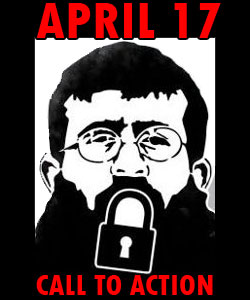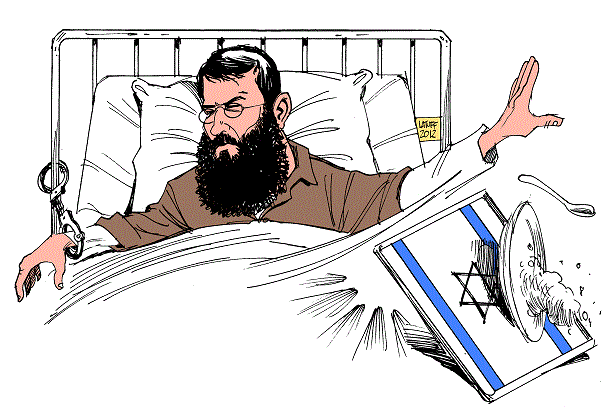-
Settler Violence: Broken Glass on Shuhada Street
by Silvia 21 February 2012 | International Solidarity Movement, West Bank Five years ago Abed Seder’s wife, Kefah, was shot five times in the chest by Israeli soldiers as she went onto her roof to check her water tank. She was 23 years old and left three sons motherless. He tells me his sons are […]
-
The world must heed Khader Adnan’s call: Make Palestinian Political Prisoners’ Day, 17 April 2012, a day of international action
21 February 2012 | Samidoun Organizational endorsements are welcome for this statement. Please click here or email april17@palestinianprisoners.org to endorse. “I hereby assert that I am confronting the occupiers not for my own sake as an individual, but for the sake of thousands of prisoners who are being deprived of their simplest human rights while the world and international […]
-
Despite the announcement of a deal limiting Khader Adnan’s detention, Addameer reiterates its urgent concern for his health
21 February 2012 | Addameer *At approximately 7:50 PM local time, it was confirmed by Ran Cohen, Executive Director of Physicans for Human Rights-Israel, that Khader Adnan has ended his hunger strike. Khader Adnan’s hearing at the Israeli High Court was cancelled today, 21 February 2012, only minutes before the hearing was to take […]
Action Alert An Nabi Saleh Apartheid Wall Arrests BDS Bethlehem Bil'in Cast Lead Demonstration Denial of Entry Ethnic Cleansing Farmers Gaza Global Actions Hebron House Demolition International law Israeli Army Jerusalem Live Ammunition Nablus Ni'lin Prisoner Ramallah Rubber-coated steel bullets Settlement Settlers Settler violence Tear-Gas Canister Video



